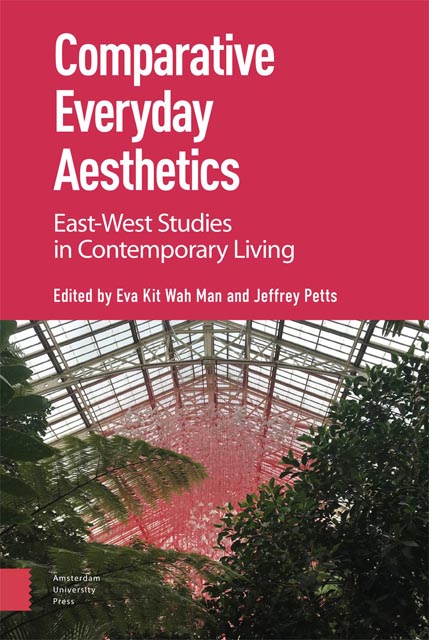Book contents
- Frontmatter
- Contents
- Living with Everyday Objects: Aesthetic and Ethical Practice
- Comparative Everyday Aesthetics: An Introduction
- Part 1 Living Aesthetically
- Part 2 Nature and Environment
- Part 3 Eating and Drinking
- Part 4 Creative Life
- Part 5 Technology and Images
- Part 6 Relationships and Communities
- Index
8 - Taking Tea, but Differently: The Chinese Tea Tradition and its European Transformations
Published online by Cambridge University Press: 18 October 2023
- Frontmatter
- Contents
- Living with Everyday Objects: Aesthetic and Ethical Practice
- Comparative Everyday Aesthetics: An Introduction
- Part 1 Living Aesthetically
- Part 2 Nature and Environment
- Part 3 Eating and Drinking
- Part 4 Creative Life
- Part 5 Technology and Images
- Part 6 Relationships and Communities
- Index
Summary
Abstract
Tea drinking is part of the everyday culinary aesthetics of China and Europe, which adopted Chinese tea drinking and equipage in the 17th century, but transformed them into their own system. This chapter explains how Europe adapted Chinese tea equipage. As the English are the most sophisticated tea drinkers among Europeans, this article focuses on English tea drinking and equipage in the 18th century as an instructive example. European knowledge of tea came only at the end of the Ming dynasty, and what they adopted was essentially the tea style (cha dao or “way of tea”) of the Ming. This chapter concentrates on comparing the English and Ming styles of tea drinking.
Keywords: tea ceremony, tea drinking, tea utensils, food aesthetics, cha dao
Time for you and time for me,
And time yet for a hundred indecisions,
And for a hundred visions and revisions,
Before the taking of a toast and tea.
—T.S. Eliot, “The Love Song of J. Alfred Prufrock”Introduction
Whether a culture can successfully absorb alien elements from another culture into its own depends on how its spirit and contextual conditions can cultivate and transform the cultural imports. Initially, the most obvious (material or formal) elements are taken or imitated. Later, however, the imports are somehow transformed by the absorbing culture and adapted to their own tradition and way of life, thus creating new forms with their style and aesthetics. With imports relating to daily life, this kind of transcultural adaption happens more quickly. Everyday life involves both practical adaptation pressures and the repetition of daily habits and functional activities. Drinking, along with eating, is an essential daily activity with crucial practical importance, even for our somatic survival, but it also has rich aesthetic potential.
This chapter explores how Europeans transformed Chinese tea drinking into their usage and custom, focusing on the comparative styles of tea-drinking equipment. Tea equipage is an interesting site for everyday aesthetics because it combines practical everyday functionality with aesthetic appreciation. Discovering the pleasures of tea only at the close of the Ming dynasty, Europeans were ignorant of older styles of tea drinking. We, therefore, compare the Ming dynasty tea apparatus with that of Europe, particularly that of England, whose people became the most enthusiastic European tea drinkers.
- Type
- Chapter
- Information
- Comparative Everyday AestheticsEast-West Studies in Contemporary Living, pp. 153 - 166Publisher: Amsterdam University PressPrint publication year: 2023

